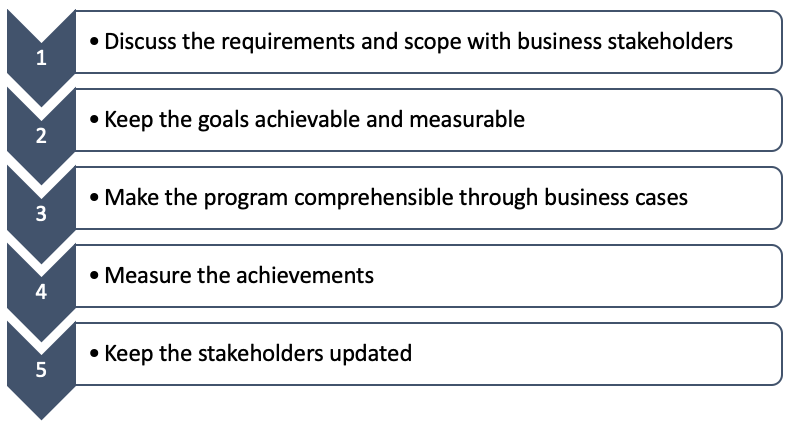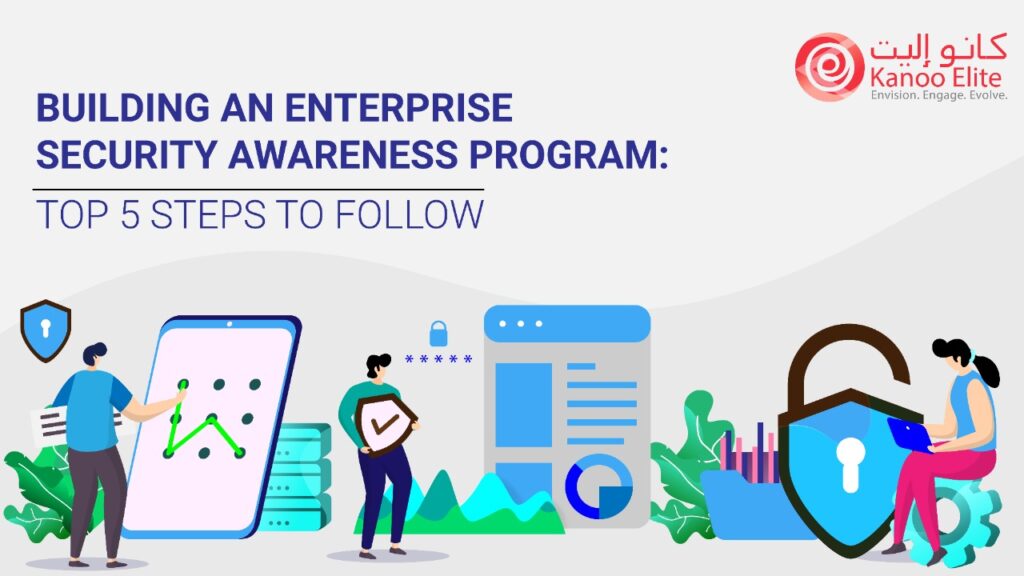“By 2023, organizations that implement specific and measurable security awareness programs will experience 75% fewer account takeover attacks than organizations that don’t” – Gartner
Since time immemorial, businesses have been facing threats of various types. Earlier, when stores were mostly physical, threats came in the forms of thefts and burglary. With the advent of digitization, businesses started moving online. The types of threats became different. Risks and threats came in the form of phishing attacks, ransomware, malware attacks, and so on. Many of these attacks are successful because of careless user actions. According to a study by Ponemon in September 2019, negligence by employees or contractors contributed to 63% of the insider security incidents that occurred.
Implementing an Enterprise Security Awareness Program is not easy and requires senior management commitment and alignment with the organizations culture, practices and needs. Such a program requires ongoing education, multi-channel communication and attack simulations.
Benefits of an Enterprise Security Awareness Program
Organizations can strengthen their security posture by informing users of the tactics and reasons why cybercriminals target them. This knowledge can improve users’ ability to identify threats and act accordingly. Employees are critical to most security objectives. Without proper employee usage, even the most advanced technical controls will remain ineffective. Thus, a lack of awareness and poor employee behavior are major contributors to security incidents that adversely impact the organization.
Challenges of Implementing an Enterprise Security Awareness Program
There are multiple challenges of implementing an Enterprise Security Awareness Program by the leaders of the organization. It is important to engage with key executives and business partners up front as a high-quality awareness program cannot be rolled out without their support. Key stakeholders need to understand the value of improved employee awareness and be convinced that their participation in this program is paramount. The stakeholders include CEO and Senior executives, managers and business unit leaders, corporate communications, marketing, human resources, legal and compliance to name a few. A lot of times it is a daunting task to get everyone on board but engagement with these key stakeholders is an important first step in building a case for an enterprise security awareness program. Measuring the success of such programs is not an easy task. Without defined objectives and understanding of factors that drive success, obtaining feedback and then improving the program is difficult.
Strategies to Implement an Enterprise Security Awareness Program
Senior management must be committed towards implementing Enterprise Security Awareness Program in the organization. As they have to overcome these challenges, it is extremely important to plan a long-term strategy to implement Enterprise Security Awareness Program.
Here’s a quick look at the steps to follow to implement an Enterprise Security Awareness Program.

Discuss the Requirement and Scope with Business Stakeholders
Is it clear to the stakeholders why the organization is implementing the Enterprise Security Awareness Program?
It is imperative to discuss it with them and ensure that they understand the objective of the program that you are initiating. The stakeholders include:
- Employees
- Customers
- Vendors
- Contractors
- Partners
As the first step toward implementing the program, you must make them aware of the requirements through discussions. Besides, you should discuss with them about the security issues that they are facing. There might be incidents, which might cause security breach, but the victims are not aware of that and think them to be the part of the day to day operations.
Inputs from the stakeholders must be considered while establishing a preliminary scope for the program. However, these scopes can be revised later as required.
Keep the Goals Achievable and Measurable
While implementing the program, ensure that each of the stakeholders understand the security awareness program. Conduct interviews with the executives as well as managers from various teams, such as:
- IT
- PR
- Marketing
- Human Resources
- Product Development
- Audit
Set the right goals and objectives after discussions with them and ensure that each of these goals are achievable and measurable. Keep a clear time frame within which you want to implement the program. If your organization has a Training team, take their help to train the employees and other stakeholders on various aspects of the Enterprise Security Awareness Program.
Wondering how to make the goals measurable?
You have to set various performance metrics and the timelines to reach those points. This will help you later while measuring the success of the program.
Make the Program Comprehensible through Business Cases
One of the major challenges of implementing an Enterprise Security Awareness Program lies in making people understand its requirement and benefits. You can plan several trainings to do that. However, the trainings, no matter how good they are, cannot be completely effective.
So, how can you ensure that executives and managers of your company follow the Security Policies that are being set?
One of the best ways to do this is to create business cases for each segment of stakeholders. For example, you will need different business cases for your employees, customers, vendors, and so on. Moreover, you will also have to design separate business cases for each of the departments of your business. Understanding the requirements through interviews with the personnel can help you form the business cases.
Measure Progress
When you have implemented the Security Awareness Program for your organization, you have to start measuring its progress. You have to consider the performance of the program against the metrics that you had developed to measure it.
It is always good to collect data wherever available, as it can be used to find out the percentage of completion of each goal.
What if you find out that some of the plans that you had put in place to implement the Enterprise Security Awareness Program have failed?
It will be easier for you to replace them or tweak them to ensure that they bring you the required success the next time.
Keep the Stakeholders Updated
Have you measured the performance of the Enterprise Security Awareness Program that you have initiated in your organization?
Are you satisfied with the results?
Irrespective of whether it has turned out to be a great success or a failure, you must keep the stakeholders updated about the results.
If there is any part which has not functioned according to expectation, discuss it with the stakeholders before discarding it. Their ideas might help you make corrections and implement it in a new way. Besides, in case of a positive result, you should also inform the stakeholders how implementing the Enterprise Security Awareness Program has helped the business.
In Summary
In a digital age when security breaches are becoming common and frequent, implementing an Enterprise Security Awareness Program can be a cost-effective way to reduce risks. If done well, this may be your last line of defense against sophisticated attackers who can bypass most expensive technologies. Also, such a program can be run by any organization of any size without breaking the bank.
Kanoo Elite can help setup and run a comprehensive Security Awareness Program for you. Please get in touch with us for the same.



